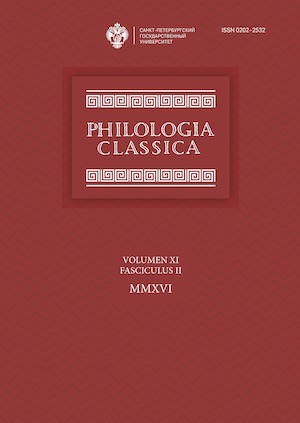Der imaginäre Bühnenraum in Senecas Hercules Furens
DOI:
https://doi.org/10.21638/11701/spbu20.2016.205Abstract
The goal of this article is to analyze the construction of space in Seneca’s Hercules Furens. It argues that the tragedy establishes a multi-tiered structural analogy among three conceptual domains — 1) the world of supernatural myth, which cannot be ‘shown’ on stage and which, for that reason, is described in rhetorically overblown ekphrastic passages, 2) the visually perceptible world of the stage action, and 3) the abstract world of ‘human life’. These three conceptual domains form an imaginary hybrid space within which philosophically relevant thought is not so much formulated as staged, thereby producing an emotionally powerful — and potentially transformative — effect on the recipient. In addition to offering a new interpretation of Hercules Furens, this article thus sheds some important light on the vexed issue of the philosophical intent of Senecan tragedy in general.
Keywords:
Seneca, Hercules Furens, tragedy, philosophy
Downloads
References
Downloads
Published
How to Cite
Issue
Section
License
Articles of "Philologia Classica" are open access distributed under the terms of the License Agreement with Saint Petersburg State University, which permits to the authors unrestricted distribution and self-archiving free of charge.






